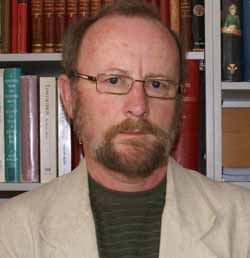An academic from Charles Sturt University (CSU) hopes to lift from historical obscurity the tragic deaths of 26 army recruits more than 60 years ago. It remains the largest accident in the history of the Australian army.
 On a chilly day in May 1945 at the Royal Australian Engineers Training Camp Kapooka near Wagga Wagga in south-western NSW, 24 young trainee engineers and two of their instructors were killed in an explosion in a bunker during a demolitions training exercise.
On a chilly day in May 1945 at the Royal Australian Engineers Training Camp Kapooka near Wagga Wagga in south-western NSW, 24 young trainee engineers and two of their instructors were killed in an explosion in a bunker during a demolitions training exercise.One trainee survived; a burnt and deaf Sapper Allan Bartlett from South Australia was found alive embedded in the clay wall of the dugout. The victims’ bodies were taken to the training camp’s morgue and local hospital by three ambulances.
The explosion was later found by an official military inquiry to be a ’blameless accident’.
“Apart from a mass funeral, where the coffins lay on four semi-trailers, and the subsequent inquiry, the Kapooka tragedy has disappeared altogether from our national memory,” said CSU senior lecturer Dr Peter Rushbrook.
The site of the explosion, now on privately owned land near the modern day army recruit training base at Kapooka, is marked by a plaque and a memorial stands at the local war cemetery in Wagga Wagga.
“However, there are no detailed published accounts of the Kapooka tragedy, and the event has not even been included in the official history of World War II.
“I believe this raises questions about remembering all of those who die in war, whether through battle, accident or illness.
“As the NSW Minister for Agriculture, E H Graham, said at the time, the men ‘have given their lives in the cause of freedom just as assuredly as they had fallen on the battlefield’.
“As a historian of the adult and vocational education and training sector, I have a role to unravel forgotten pasts and bring them to the attention of practitioners, students, scholars and policy makers as a way of ‘rounding out’ the contexts in which they work.
“A better understanding will hopefully lead to better practices and policies within the sector and leave a record for posterity.
“If a story I have researched reaches a wider audience - in this case the tragedy at Kapooka - then I hope it leads to a better informed public able to make judgements about the value of my work,” he concluded.
Dr Rushbrook’s article recounting the 1945 Kapooka tragedy is published in the journal History of Education Review. He plans to undertake further research on the Kapooka story and publish it as a book in the near future.





Social
Explore the world of social